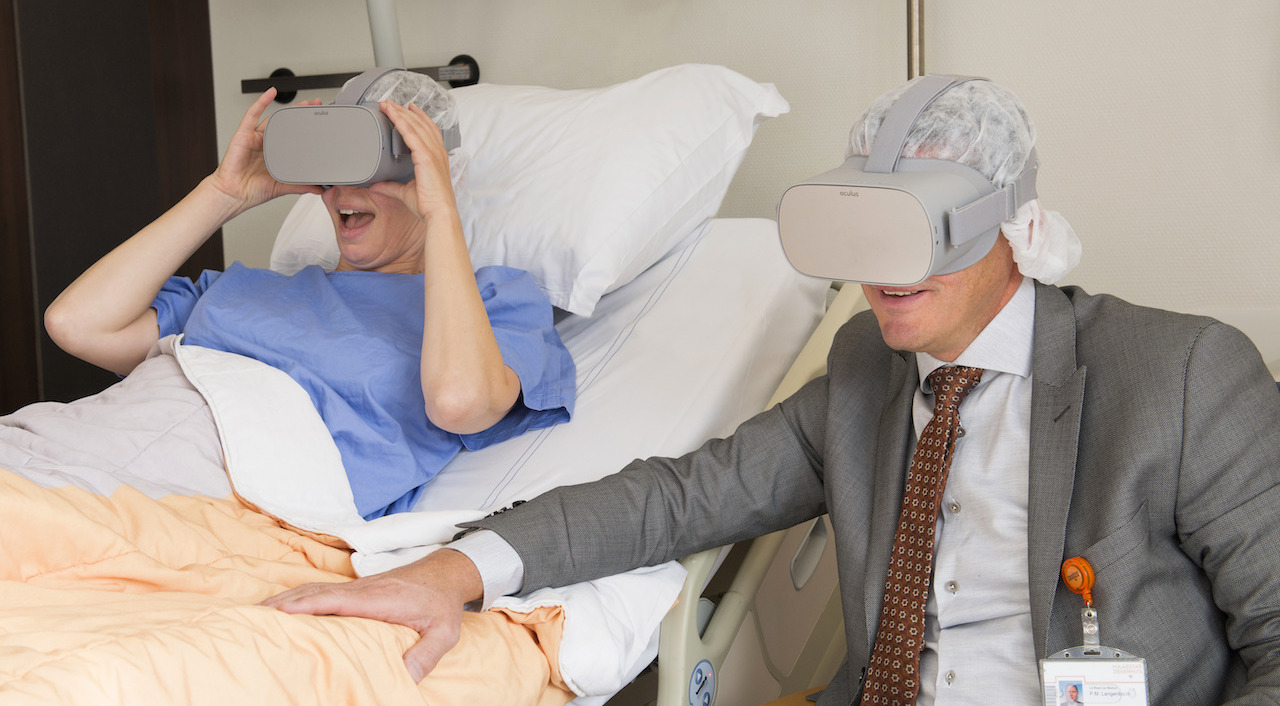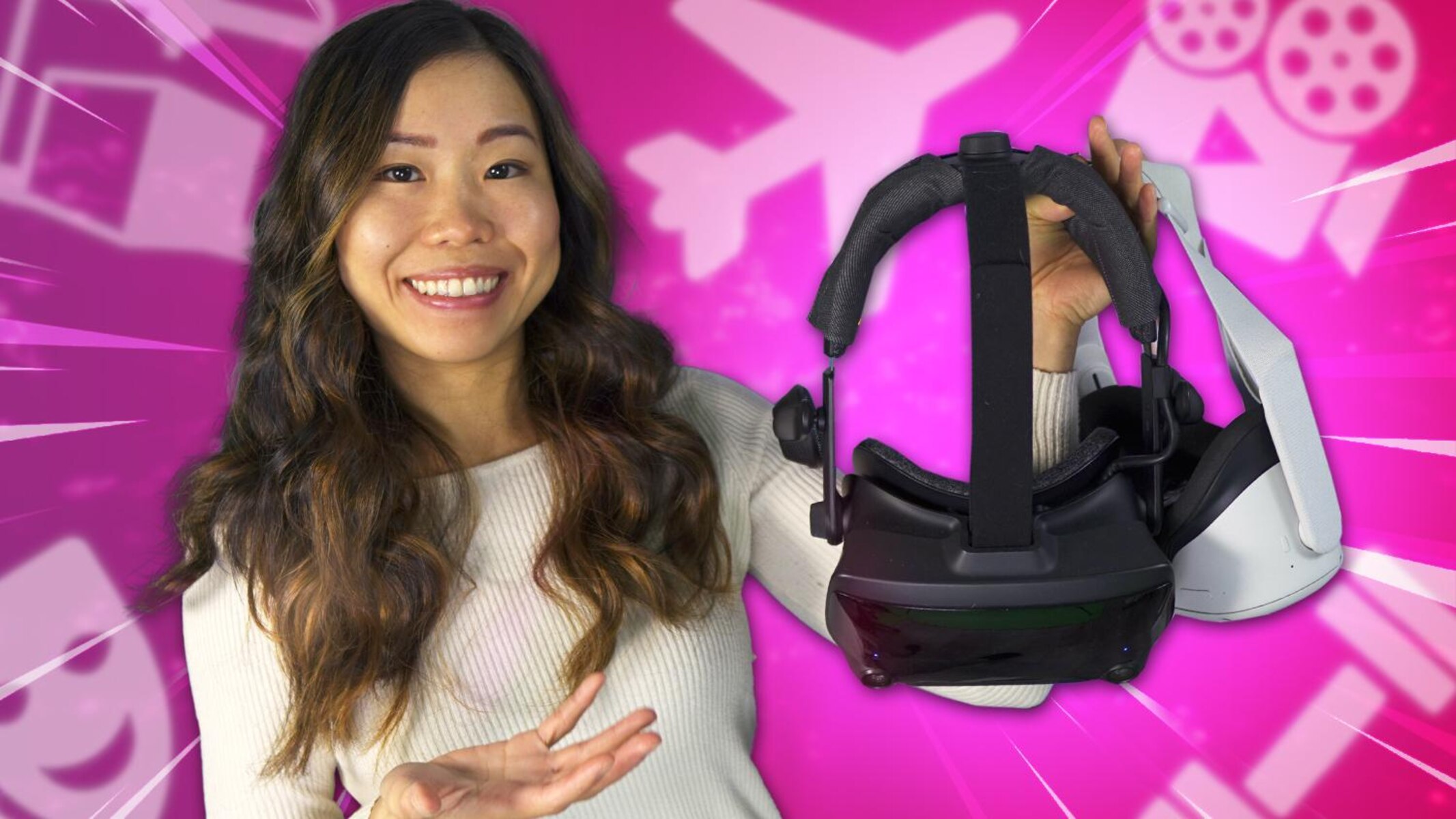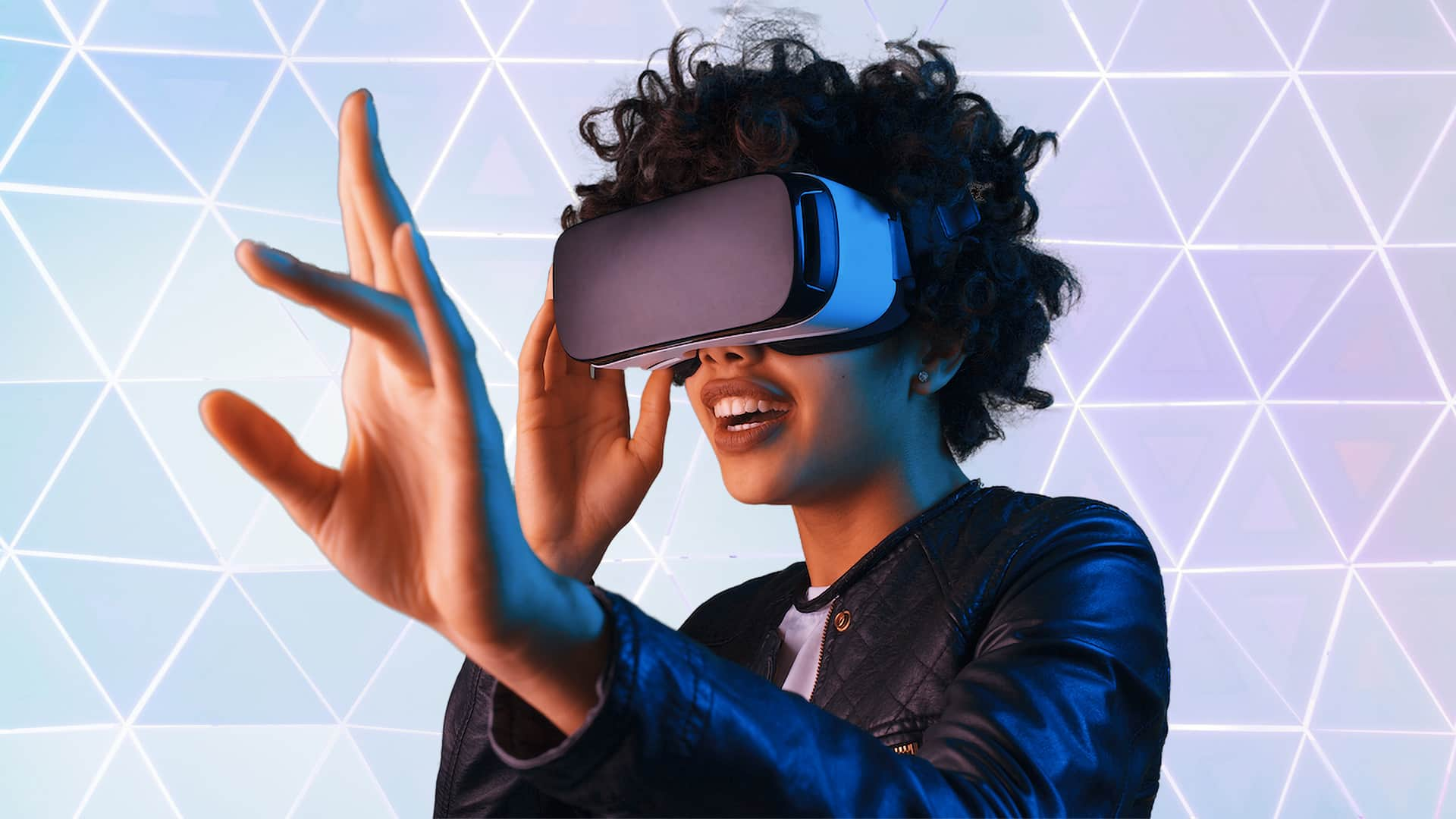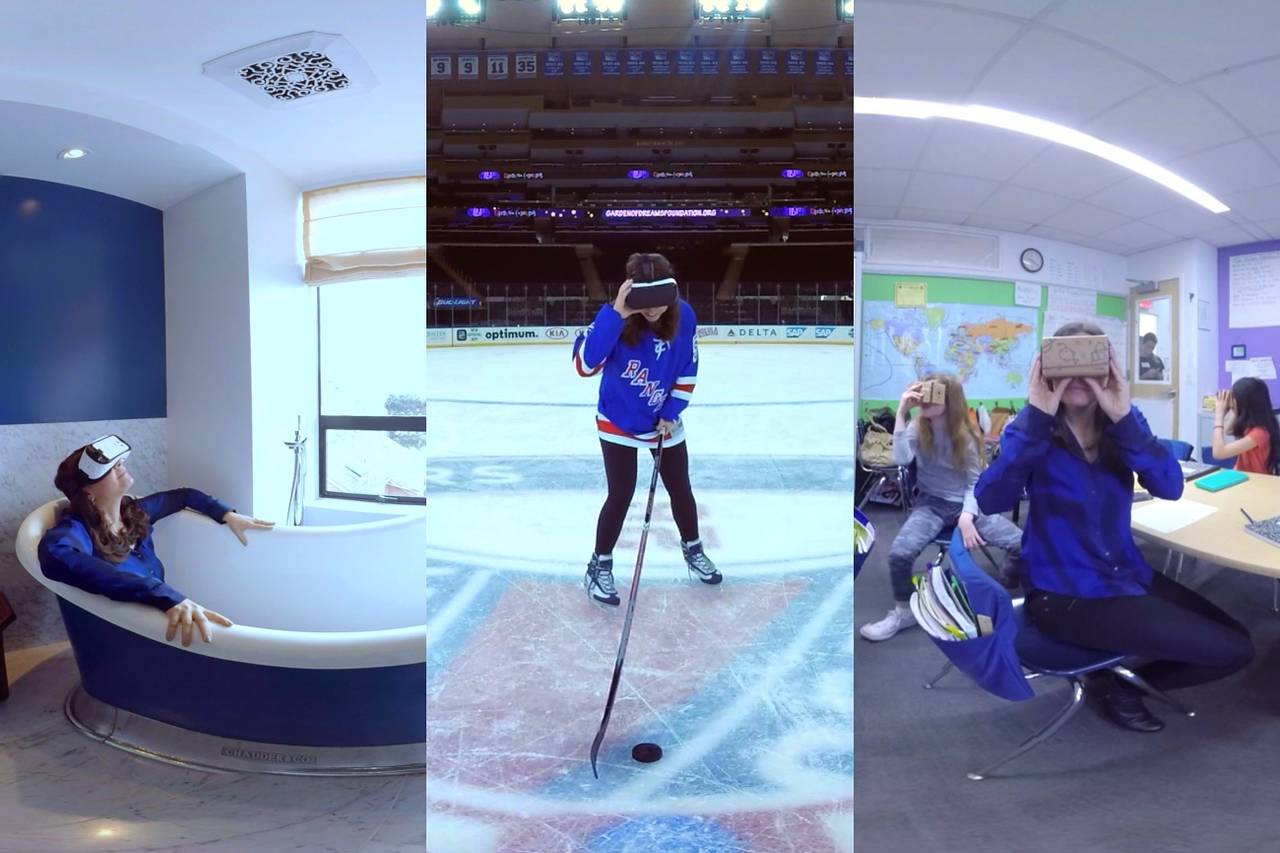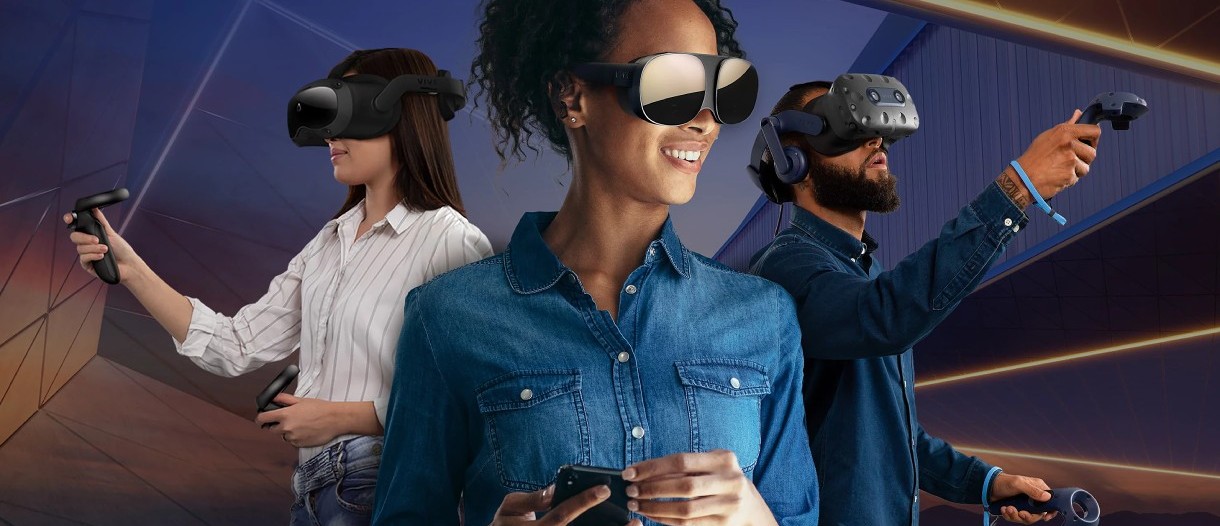Introduction
Welcome to the world of virtual reality! Over the past few decades, technology has evolved to the point where we can now immerse ourselves in virtual environments that mimic the real world. Virtual reality (VR) has transformed various industries, from gaming and entertainment to education and healthcare. One fascinating application of virtual reality is in the field of therapy, specifically Virtual Reality Exposure Therapy (VRET).
Virtual Reality Exposure Therapy is a cutting-edge approach that harnesses the power of virtual reality to help individuals overcome anxieties, phobias, and other psychological challenges. Whether you fear heights, public speaking, flying, or even spiders, virtual reality can provide a safe and controlled environment for exposure therapy.
In this article, we will explore the concept of Virtual Reality Exposure Therapy, how it works, the benefits it offers, and its application in various fields. We will also discuss the limitations and ethical considerations involved, as well as the future direction of this innovative therapy.
Before we dive deeper, it is important to note that Virtual Reality Exposure Therapy should not replace traditional therapy methods but rather serve as a complementary tool in a therapist’s toolkit. It is always recommended to consult with a qualified healthcare professional before pursuing any form of therapy.
What Is Virtual Reality Exposure Therapy?
Virtual Reality Exposure Therapy (VRET) is a therapeutic technique that uses virtual reality technology to expose individuals to stimuli that provoke anxiety or fear. By creating a controlled and immersive virtual environment, VRET allows individuals to confront their fears in a safe and monitored setting.
The basic premise of VRET is to gradually expose the individual to the fear-inducing stimuli, starting from a lower intensity and gradually increasing it over time. This gradual exposure helps desensitize the individual to the fear or anxiety, allowing them to build resilience and develop coping mechanisms. The therapist can tailor the virtual environment to mimic real-life scenarios that the individual finds challenging, such as heights, crowded spaces, or public speaking.
During a VRET session, the individual wears a virtual reality headset that immerses them in a realistic and interactive virtual environment. The headset tracks their head movements, allowing them to explore the virtual space from different angles. Depending on the specific therapy goals, the individual may also have handheld controllers to interact with the virtual environment, adding a tactile element to the experience.
Virtual reality technology provides a high level of immersion, enabling individuals to experience a sense of presence in the virtual environment. This heightened sense of presence promotes emotional engagement and triggers the same physiological and psychological responses that occur in real-life situations. For example, if someone has a fear of flying, the virtual reality program can simulate the sights, sounds, and sensations of being in an airplane, eliciting a realistic fear response.
It is important to note that VRET is a collaborative process between the therapist and the individual. The therapist guides the sessions, monitors the individual’s anxiety levels, and provides support throughout the exposure process. The treatment plan is tailored to the individual’s needs, ensuring that they progress at a pace that is comfortable for them.
Now that we have a general understanding of what Virtual Reality Exposure Therapy is, let’s explore how it works in more detail.
How Does Virtual Reality Exposure Therapy Work?
Virtual Reality Exposure Therapy (VRET) operates on the principle of systematic desensitization, a therapeutic technique that gradually exposes individuals to their fears and anxieties. By replicating realistic and immersive virtual environments, VRET creates a safe space for individuals to confront and overcome their fears. Let’s delve into the key components and steps involved in VRET:
1. Assessment and Goal Setting: Before embarking on VRET, a thorough assessment is conducted by a qualified therapist. The individual’s fears, triggers, and specific goals are identified, ensuring that the therapy sessions are tailored to their needs.
2. Virtual Environment Creation: Based on the assessment, the therapist creates a virtual environment that simulates the anxiety-inducing scenarios. This could range from heights, flying, social situations, or any other phobia the individual may have.
3. Exposure Hierarchy: The therapist and individual work together to establish an exposure hierarchy. This hierarchy involves ranking the anxiety-inducing scenarios from least to most challenging. This step ensures a gradual and systematic approach to exposure therapy.
4. Virtual Reality Sessions: During the VRET sessions, the individual wears a virtual reality headset and enters the simulated environment. The therapist guides the individual through the exposure hierarchy, starting with the least anxiety-provoking scenarios. As the individual becomes more comfortable and their anxiety decreases, they progress to more challenging scenarios.
5. Cognitive-Behavioral Techniques: Alongside exposure, cognitive-behavioral techniques are incorporated to help individuals reframe negative thoughts and responses. The therapist assists the individual in identifying and challenging irrational beliefs, replacing them with more realistic and positive ones.
6. Real-Time Feedback and Support: Virtual reality technology allows for real-time feedback and support from the therapist during the exposure sessions. The therapist can monitor the individual’s physiological responses, anxiety levels, and provide guidance and reassurance as needed.
7. Generalization and Maintenance: As the individual progresses through the exposure hierarchy, they gradually generalize their newfound coping skills to real-life situations. The goal is for the individual to maintain their progress beyond the therapy sessions, applying their learned strategies to effectively manage their fears and anxieties.
Through the combination of gradually increasing exposure, cognitive-behavioral techniques, and real-time support, Virtual Reality Exposure Therapy empowers individuals to confront and overcome their fears in a controlled and supportive environment.
Now that we have explored how Virtual Reality Exposure Therapy works, let’s move on to discussing the benefits it offers.
Benefits of Virtual Reality Exposure Therapy
Virtual Reality Exposure Therapy (VRET) offers several significant benefits that make it a promising and effective treatment option for individuals dealing with various anxieties, phobias, and mental health conditions. Here are some key benefits associated with VRET:
1. Enhanced Treatment Efficacy: Research has shown that VRET can be as effective as traditional exposure therapy, or even more so, in reducing anxiety and fear. The immersive and realistic nature of virtual reality allows for a more engaging and impactful therapeutic experience, leading to better treatment outcomes.
2. Safe and Controlled Environment: VRET provides a safe and controlled environment for individuals to confront their fears. Unlike real-world exposure, where there may be limitations and potential risks, virtual reality allows therapists to create tailored scenarios that can be adjusted to meet the needs and comfort levels of each individual.
3. Gradual Exposure: One of the key advantages of VRET is its ability to facilitate gradual exposure. Individuals can start with less anxiety-provoking scenarios and progress at their own pace, gradually building resilience and tolerance. This controlled exposure helps individuals develop effective coping strategies and reduces the risk of overwhelming anxiety during the therapy process.
4. Realistic and Immersive Experience: Virtual reality technology provides a high level of immersion, replicating real-world situations with remarkable detail. This realism enhances the emotional engagement of the individual, allowing for a more authentic and impactful therapeutic experience.
5. Versatility and Customization: VRET can be customized to target specific fears and phobias. Therapists can create virtual environments that closely resemble the anxiety-inducing situations, allowing individuals to practice and develop coping skills in a tailored and personalized manner. This versatility makes VRET suitable for a wide range of conditions and phobias.
6. Cost-Effective and Time-Efficient: VRET can potentially be a cost-effective and time-efficient treatment option. It eliminates the need for physical exposure environments or resources, making therapy more accessible and affordable for a larger number of people.
7. Long-Term Benefits: VRET offers the potential for long-term benefits. By empowering individuals to confront and overcome their fears, it equips them with valuable coping mechanisms that can be utilized beyond the therapy sessions. This helps individuals maintain their progress and manage anxiety and phobias in real-life situations.
Overall, Virtual Reality Exposure Therapy has the potential to revolutionize the field of therapy by offering a safe, immersive, and effective approach to treating anxieties, phobias, and other psychological conditions.
Now that we have explored the benefits of VRET, let’s discuss common applications of this innovative therapy.
Common Applications of Virtual Reality Exposure Therapy
Virtual Reality Exposure Therapy (VRET) has shown promising results in a wide range of clinical and therapeutic applications. Let’s explore some of the common areas where VRET is being utilized:
1. Anxiety Disorders: VRET has been particularly effective in treating various anxiety disorders, such as specific phobias, social anxiety disorder, and post-traumatic stress disorder (PTSD). By exposing individuals to their specific triggers in a controlled virtual environment, VRET helps desensitize them to anxiety-provoking situations and reduces their overall anxiety levels.
2. Fear of Flying: Fear of flying, or aviophobia, is a common anxiety disorder that can significantly impact individuals’ travel and quality of life. VRET provides a valuable tool for individuals to face and overcome their fear of flying by simulating flight situations, allowing them to gradually build confidence and reduce anxiety associated with air travel.
3. Fear of Heights: Acrophobia, or the fear of heights, can be debilitating for individuals who experience it. VRET enables individuals to confront their fear of heights within a controlled virtual environment, gradually exposing them to heights while providing real-time feedback and support to help them overcome their anxieties.
4. Public Speaking: Glossophobia, or the fear of public speaking, is a common anxiety that affects individuals in various personal and professional settings. VRET offers a safe and immersive platform for individuals to practice and improve their public speaking skills, gradually reducing anxiety and building confidence in front of virtual audiences.
5. Post-Traumatic Stress Disorder (PTSD): VRET has shown significant promise in the treatment of individuals with PTSD. By recreating traumatic events in a controlled virtual environment, VRET allows individuals to process their traumatic experiences in a safe and supportive setting. This exposure therapy approach can help individuals reduce intrusive thoughts, flashbacks, and other symptoms associated with PTSD.
6. Addiction and Substance Abuse: VRET can be a valuable tool in the treatment of addiction and substance abuse. By simulating tempting environments or situations, VRET allows individuals to practice refusal skills and coping mechanisms, helping them develop strategies to resist triggers and cravings associated with addiction.
7. Pain Management: VRET has also been explored as a non-pharmacological approach to pain management. By diverting attention and providing a distraction, virtual reality can help alleviate perceptions of pain and discomfort, making it a potential complementary therapy in pain management protocols.
These are just a few examples of the diverse applications of Virtual Reality Exposure Therapy. As technology continues to advance and research progresses, the potential for using VRET in various therapeutic settings is expanding.
Now that we have explored the common applications of VRET, let’s discuss the limitations and ethical considerations associated with this therapy.
Limitations and Ethics of Virtual Reality Exposure Therapy
While Virtual Reality Exposure Therapy (VRET) offers numerous benefits, it is important to acknowledge its limitations and consider the ethical implications associated with this innovative therapeutic approach.
1. Access to Technology: One significant limitation of VRET is the requirement for specialized technology. Not all individuals or therapy settings may have access to the necessary virtual reality equipment and software. This limitation can restrict the widespread adoption of VRET and limit its availability to those who could benefit from it.
2. Realism of Virtual Environments: Virtual reality technology has come a long way in creating realistic environments, but there may still be limitations in completely replicating real-world scenarios. Some individuals may find that the virtual environment does not accurately capture the intensity or nuances of their fears, potentially impacting the efficacy of the therapy.
3. Generalization to Real-Life Situations: While individuals may experience positive outcomes within the virtual environment, it is essential to ensure that the skills and techniques learned in VRET generalize to real-life situations. The transfer of learned behaviors and coping mechanisms from virtual reality to the real world may require additional support and reinforcement.
4. Therapist Competence and Training: The success of VRET relies heavily on the competence and training of the therapists involved. Therapists need adequate knowledge and experience in virtual reality technology and exposure therapy techniques to guide individuals effectively through the therapy process. Therefore, ensuring appropriate training and supervision for therapists is crucial to maintain the integrity and safety of VRET interventions.
5. Ethical Considerations: Ethical considerations must be taken into account when implementing VRET. Informed consent, privacy, and confidentiality should be prioritized during the therapy process. In addition, clear guidelines and protocols should be established for addressing any potential adverse effects or incidents that may arise during virtual reality exposure sessions.
6. Individual Suitability: VRET may not be suitable for everyone. Individuals with certain medical conditions, sensory sensitivities, or psychological disorders may not be ideal candidates for this form of therapy. Thorough screening and assessment should be conducted to determine the suitability of individuals for VRET treatment.
7. Integration with Traditional Therapy: While VRET can be a valuable tool, it should not replace traditional therapy methods. Virtual reality exposure should be viewed as a complementary approach, integrated into a comprehensive treatment plan that may include other evidence-based therapies and techniques.
Understanding these limitations and ethical considerations is vital to ensure responsible and effective implementation of Virtual Reality Exposure Therapy. By addressing these challenges, we can continue to improve and refine this therapeutic approach in the future.
Now, let’s discuss the potential future directions for Virtual Reality Exposure Therapy.
Future Directions for Virtual Reality Exposure Therapy
Virtual Reality Exposure Therapy (VRET) has already made significant advancements in the field of therapy, but there are exciting opportunities for future growth and development. Here are some potential future directions for VRET:
1. Advancements in Technology: As technology continues to evolve, we can expect to see more advanced and realistic virtual reality systems. Higher resolution displays, improved haptic feedback, and enhanced motion tracking capabilities will contribute to even greater immersion and presence in virtual environments. These advancements will improve the effectiveness and realism of VRET interventions.
2. Tailored Therapy Environments: In the future, VRET may allow for even more customization and personalization of therapy environments. By tailoring the virtual environments and stimuli to each individual’s unique fears and triggers, therapy can become even more targeted and effective, increasing the chances of successful outcomes.
3. Mobile and Consumer-Grade VR: The accessibility and availability of virtual reality technology continue to grow. With the increasing affordability and innovation in mobile phone-based virtual reality systems, VRET may become more accessible to a wider range of individuals. Consumer-grade virtual reality devices could enable individuals to engage in VRET sessions from the comfort of their own homes, under the guidance of their therapists.
4. Gamification and Interactive Elements: Adding gamification and interactive elements to VRET can increase engagement and motivation. By incorporating goal-oriented tasks, progress tracking, and rewards systems, individuals may feel more incentivized to actively participate in their therapy sessions, leading to better outcomes.
5. Virtual Reality Exposure Social Support Networks: Virtual reality technology has the potential to connect individuals with similar fears or anxieties, creating virtual support networks. Collaborative virtual environments could facilitate group therapy sessions, providing individuals with the opportunity to share their experiences, provide support to one another, and practice social skills within a controlled setting.
6. Combination with Other Therapies: VRET can be combined with other therapeutic approaches, creating hybrid interventions that target multiple aspects of psychological wellbeing. Combinations such as virtual reality cognitive-behavioral therapy or virtual reality mindfulness-based interventions may offer comprehensive and integrated treatment options for individuals with complex mental health conditions.
7. Integration into Healthcare Systems: As the evidence for VRET continues to grow, there is a chance for it to become more integrated into mainstream healthcare systems. Expanding the availability of VRET in hospitals, clinics, and rehabilitation centers can increase access for individuals who could potentially benefit from this innovative therapy.
These potential future directions hold great promise for the continued growth and impact of Virtual Reality Exposure Therapy. As research and technology advance, we can expect further advancements that will make VRET even more effective and accessible for individuals dealing with anxieties, phobias, and other mental health conditions.
Now that we have explored the future directions for VRET, let’s conclude our discussion on the topic.
Conclusion
Virtual Reality Exposure Therapy (VRET) is a groundbreaking therapeutic approach that harnesses the power of virtual reality to help individuals confront and overcome their fears and anxieties in a safe and controlled environment. By immersing individuals in realistic virtual environments and gradually exposing them to their fears, VRET offers a unique and effective method for desensitization and skill-building.
In this article, we have explored the concept of VRET, understanding how it works and its various applications. We have discussed the benefits of VRET, including enhanced treatment efficacy, controlled exposure, and the potential for long-term benefits. Additionally, we have acknowledged the limitations of VRET, such as technology accessibility and the need for therapist competence and customization.
Considering the ethical implications surrounding VRET, we recognize the importance of informed consent, privacy, and therapist training. The integration of VRET with traditional therapy methods and the future directions of the therapy have also been highlighted. Advancements in technology, tailored therapy environments, mobile and consumer-grade VR, and the potential for gamification and interactive elements present exciting opportunities for the future of VRET.
While VRET is a promising therapeutic approach, it is essential to note that it should never replace traditional therapy methods. VRET should be viewed as a complementary tool, integrated into a comprehensive treatment plan that suits the individual’s specific needs and goals.
In conclusion, Virtual Reality Exposure Therapy represents a significant advancement in the field of therapy, offering individuals a new way to confront their fears, develop coping mechanisms, and improve their overall well-being. With further research, advancements in technology, and responsible implementation, VRET has the potential to positively impact the lives of many individuals dealing with anxieties, phobias, and other mental health challenges.










